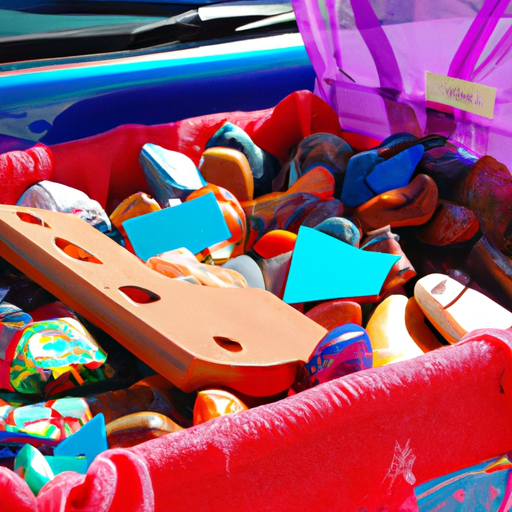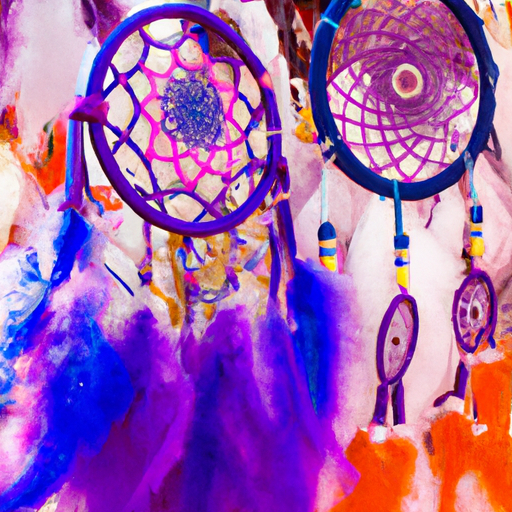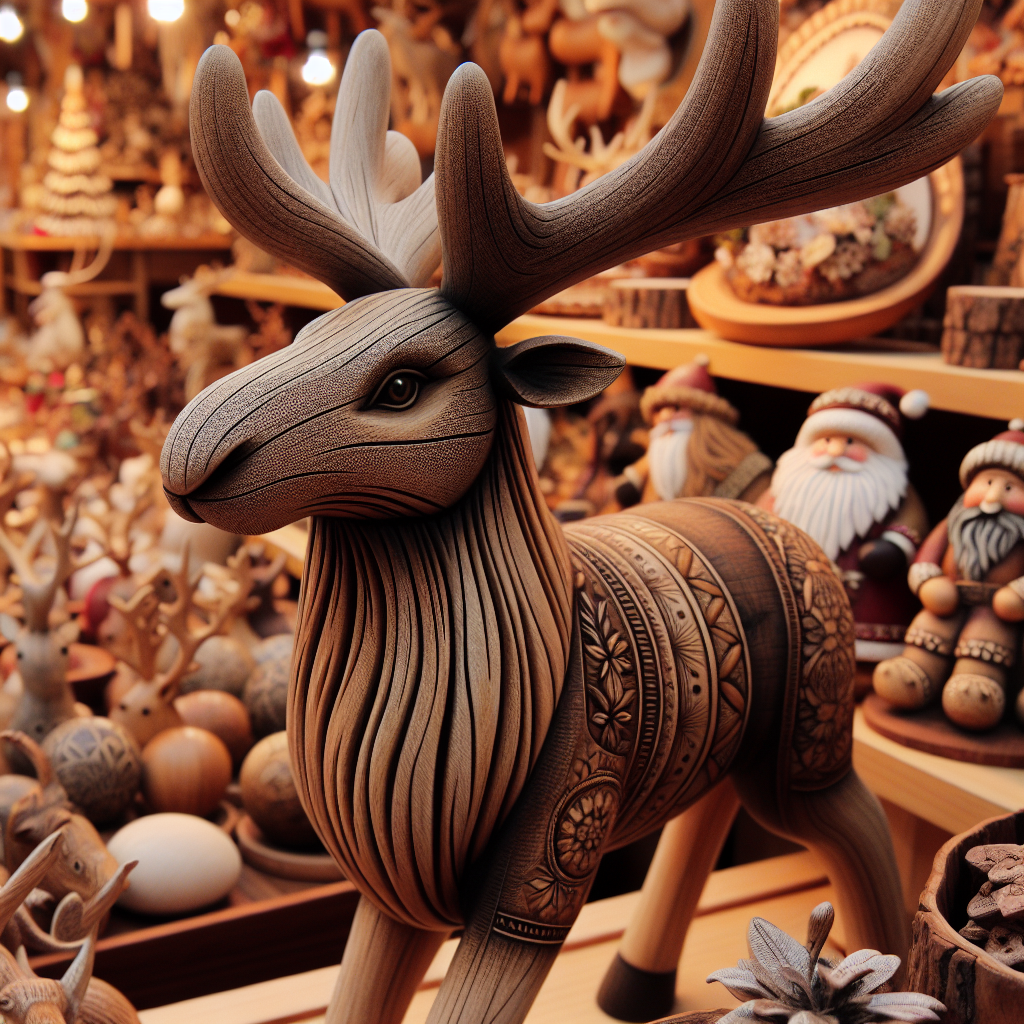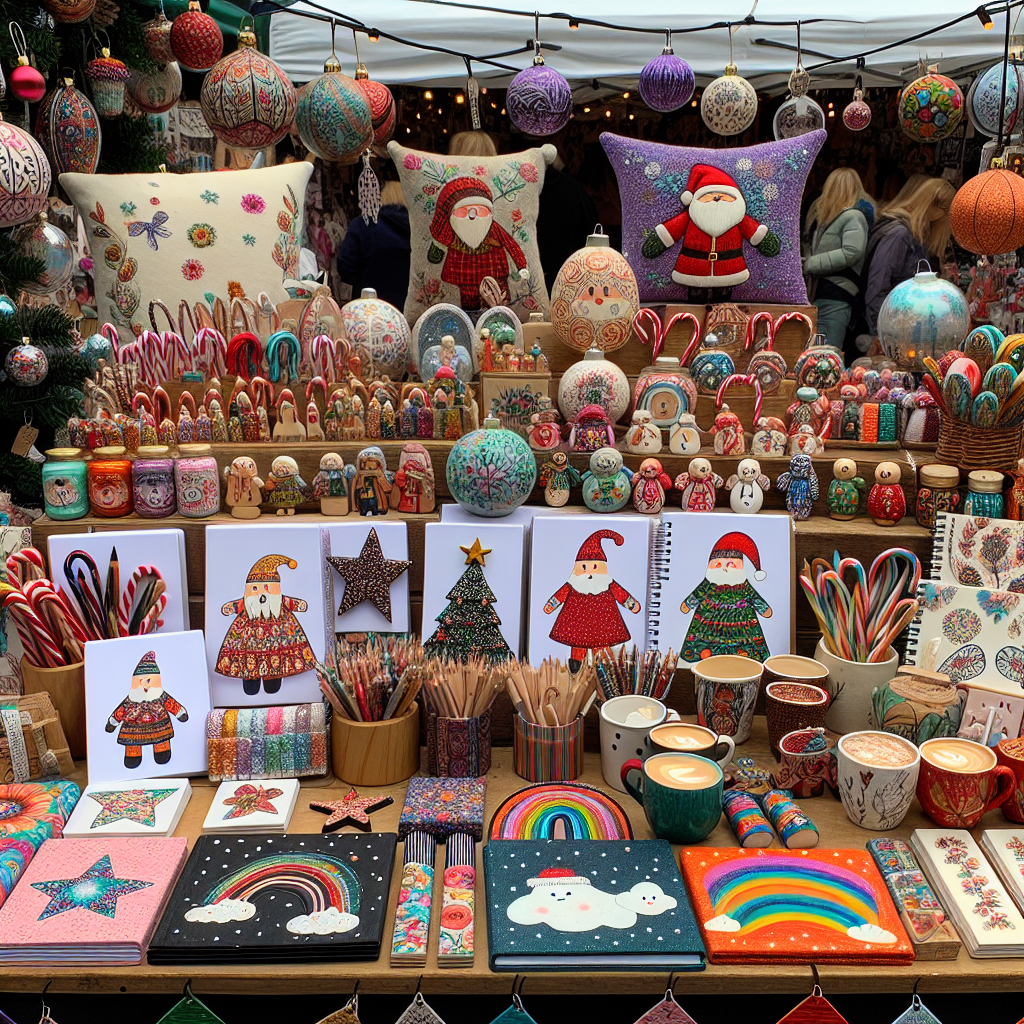Hey there! I just got back from my very first craft fair, and I am bursting with excitement to share some highlights with you. If you’ve ever wondered what it’s like to participate in a craft fair, stick around because I captured it all on video. From the moment I applied to the event to setting up my booth, meeting amazing artists, and selling my handmade rocks, I’m taking you through every step of the process. So, get ready to experience the Craft Fest in Mountain Home, Arkansas, with me!
When I first received the email welcoming me to the craft fair, I couldn’t contain my happiness. After loading up my car with plenty of rocks to sell (you won’t believe how I transported them), I hit the road, only to encounter a small detour. Thankfully, two kind ladies helped me get back on track. Arriving at the fairgrounds, I had a day to set up my booth, and with a little nervousness and some forgotten velcro stickers, I managed to get everything in place. Opting for a campsite instead of a hotel, I had a pleasant stay, and the next morning, I kicked off my first day at the festival. The craft fair was filled with incredible displays, amazing smells, and the friendliest people. I had the opportunity to meet talented artists and explore various crafts, from beautiful handbags to intricately carved wooden items. At the end of each day, I returned to my campsite, broke everything down, and couldn’t help but feel grateful for the incredible experience. If you’ve ever considered participating in a craft fair, trust me, it’s totally worth it!
Preparation and Arrival
Finding craft fairs in your area
When preparing for your first craft fair, the first step is to find craft fairs in your area. A simple online search can provide you with a list of upcoming events. Take note of the dates, locations, and any specific information about the fair. This will help you narrow down your options and choose the one that suits your needs and preferences.
Submitting the application and fees
Once you have chosen a craft fair to participate in, the next step is to submit the application and pay the necessary fees. Craft fairs usually require vendors to fill out an application form and provide information about the products they will be selling. Be sure to carefully read the application instructions and provide all the necessary details. Additionally, pay attention to any deadlines and make sure to submit your application and fees on time.
Getting the confirmation email
After submitting your application and fees, you will typically receive a confirmation email from the craft fair organizers. This email serves as a confirmation that your application has been accepted and that you have secured a spot at the fair. It may also contain important information such as set-up times, booth assignments, and any additional requirements or guidelines.
Loading up and hitting the road
Once you have received the confirmation email, it’s time to start preparing for the craft fair. This includes loading up your products, display materials, and any other items you may need. Make sure to pack everything securely to prevent any damage during transportation.
Navigating a detour on the way
While on your way to the craft fair, it’s not uncommon to encounter unexpected roadblocks or detours. This can be a little stressful, especially if you’re running behind schedule. However, it’s important to stay calm and find alternative routes or follow the instructions of local authorities. Don’t hesitate to ask for directions or assistance if needed. Remember, detours are just temporary setbacks and won’t affect the success of your craft fair experience.
Setting Up at the Fair
Transporting rocks to the table
If you’re selling rocks or any other heavy items at the craft fair, it’s important to have a reliable method of transporting them from your vehicle to your table. Consider using a sturdy cart or trolley to make the process easier. You can also use bins or crates to organize and transport your rocks efficiently. Take your time and be mindful of any tripping hazards while moving your items.
Putting up signs
Proper signage is crucial for attracting customers and showcasing your products. Display signs that clearly indicate your business name, pricing, and any special offers or promotions. Consider using eye-catching colors, fonts, and graphics to make your signs stand out. It’s also a good idea to include your contact information and social media handles so customers can easily reach out to you or follow you online.
Making a last-minute supply run
Before the craft fair officially starts, it’s a good idea to do a quick inventory check and make any last-minute supply runs. This could include restocking popular items, replenishing any packaging materials or business cards, and ensuring that you have enough cash for giving out change. Being prepared in advance will help you provide a seamless shopping experience for your customers.
Final result of the setup
Once you have completed setting up your booth, take a step back and admire your hard work. Admire the way your products are beautifully displayed and the effort you put into creating an inviting and visually appealing space. Take photos of your setup to document your first craft fair experience and share it with others. You should feel proud and excited about what lies ahead.
Checking into the campsite
If you’ve chosen to camp during the craft fair, it’s time to check into your campsite. Settle in and make yourself comfortable. Unpack your belongings and ensure that you have all the essentials you need for the duration of the fair. Take some time to relax and recharge before the festivities begin. Camping can be a cost-effective and convenient option for vendors, and it also allows for a unique experience of being close to nature while participating in the craft fair.
Day 1 of the Craft Festival
Breakfast with friends
Start your first day of the craft festival on a positive note by having breakfast with friends. This is a great opportunity to socialize, catch up, and share any last-minute tips or advice. Enjoy a delicious meal together and fuel up for the exciting day ahead. Your friends can provide support and encouragement, making your first craft fair experience even more memorable.
Hiding kindness rocks around town
Before the craft fair begins, take some time to spread positivity by hiding kindness rocks around the town. These are small decorative rocks with positive messages or images painted on them. Hide them in public places for others to find and enjoy. This act of kindness not only brings joy to those who find them but also helps promote your craft fair booth and showcase your creativity.
Early glimpse of the craft fair
Arriving early to the craft fair gives you the opportunity to get a sneak peek at the event before it gets crowded. Take a walk around to familiarize yourself with the layout, neighboring vendors, and any attractions or entertainment. This will allow you to plan your day, explore other booths, and prioritize your shopping or networking opportunities.
Impressions of the various crafts and vendors
As you explore the craft fair, take note of the various crafts and vendors present. Observe the unique products, displays, and techniques used by fellow artisans. Engage in conversations with other vendors to learn about their experiences, challenges, and success stories. This will not only expand your knowledge but also provide opportunities for collaboration or future partnerships.
Special ornament from a veteran
Craft fairs often highlight the talents of veterans and honor their service. Keep an eye out for booths or displays that support veterans, as they may offer special items or ornaments. This is an excellent opportunity to show your support for veterans and commemorate their dedication and sacrifice. Consider purchasing a special ornament as a memento of your first craft fair experience.
Day 2 of the Craft Festival
Marking down prices
On the second day of the craft festival, you have the chance to adjust your prices and attract more customers. Consider marking down your prices slightly to create a sense of urgency and encourage potential buyers to make a purchase. This can help you sell more items and achieve your sales goals while maintaining profitability.
Exploring other vendors’ displays
Take advantage of the second day to further explore other vendors’ displays. Discover new products, techniques, or trends that may inspire you. Engage in conversations with vendors to exchange ideas, ask questions, and build connections within the crafting community. Learning from others can help you grow as an artisan and refine your own craft.
Learning about new products
Use the second day to learn about new products that may complement your existing offerings. Talk to vendors who specialize in different crafts or mediums and explore the potential for collaboration or expanding your product range. This can help you diversify your inventory and attract a wider range of customers.
Breaking down the display
As the craft festival comes to an end, it’s time to break down your display. Carefully pack your remaining inventory, display materials, and signage. Take down any temporary fixtures or decorations and ensure that your booth area is clean and tidy. This process may take some time, so be patient and organized. Remember to express gratitude to the event staff and fellow vendors for a successful craft festival.
Overview of items sold
Before leaving the craft festival, take a moment to review and celebrate your accomplishments. Take inventory of the items you sold and calculate your sales numbers. This will provide you with valuable insights into which products were the most popular or profitable. It will also help you evaluate your pricing strategy and make informed decisions for future craft fairs.
Expenses and Conclusion
Cost breakdown of fees, gas, and lodging
It’s important to track and understand the expenses associated with participating in a craft fair. This includes the fees for booth space, transportation costs such as gas, and lodging if you choose to stay overnight. Take the time to calculate these expenses to gain a clearer picture of your overall costs and plan for future craft fairs more effectively.
Minimal expenses and breaking even
Participating in a craft fair can be a cost-effective endeavor if managed efficiently. By keeping expenses minimal and breaking even or making a profit, you can ensure that your craft fair experience is financially viable. Evaluate the success of your first craft fair by analyzing your expenses, sales, and overall experience. If you were able to cover your costs and still have a positive experience, it’s a great starting point for future craft fairs.
Positive experience and new ideas
Reflect on your overall experience at the craft fair. Take note of any positive moments, interactions, or feedback you received from customers or fellow vendors. Consider the lessons learned, and make a list of ideas or improvements for future craft fairs. This self-reflection will help you grow as an artisan and prepare for future events with more confidence and creativity.
Thank you to Craft Fest organizers
Express your gratitude to the craft fair organizers for providing the opportunity to showcase your work. Craft fair organizers put in a tremendous amount of effort and work behind the scenes to create a successful event. Send them a thank you note or email to show your appreciation for their hard work and dedication.
Plans for future craft fairs
After your first craft fair, take the time to evaluate your experience and plan for future events. Consider the lessons learned, expenses incurred, and successes achieved. Create a list of upcoming craft fairs that align with your goals and interests. Set realistic targets and plan ahead to ensure a successful and fulfilling craft fair journey.



